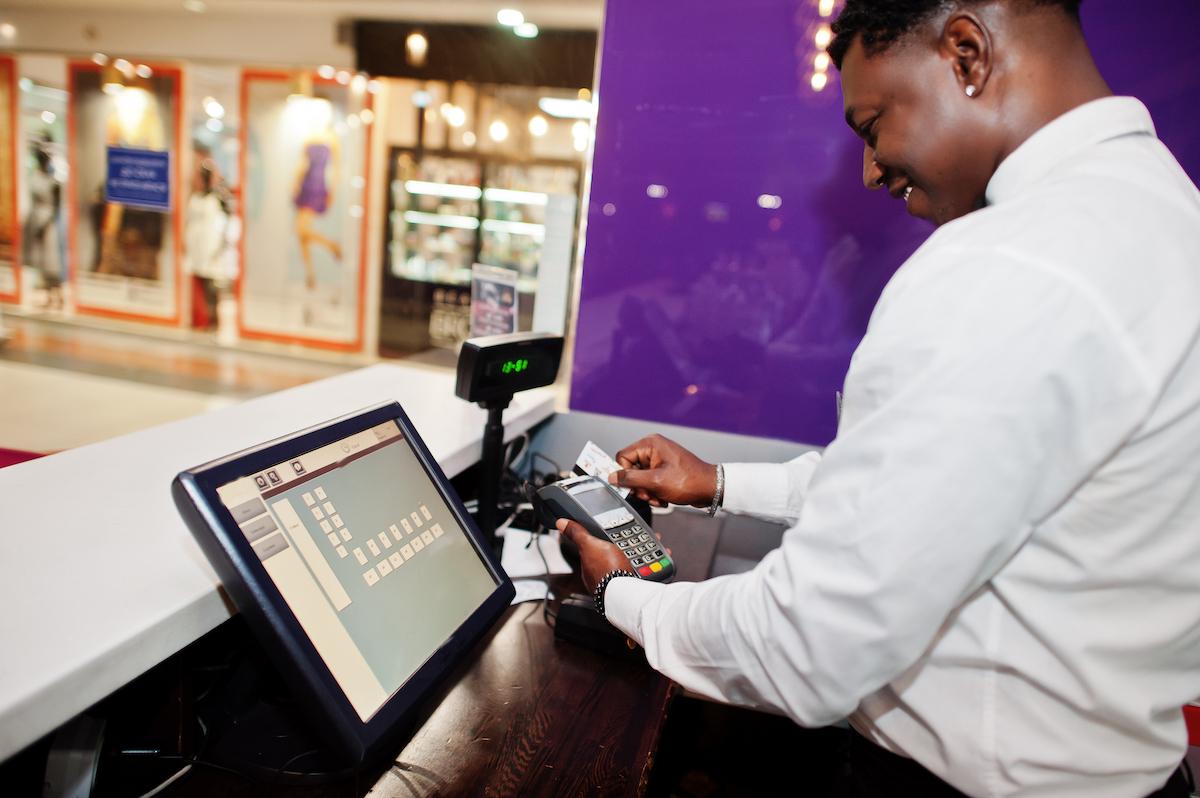Business News Daily provides resources, advice and product reviews to drive business growth. Our mission is to equip business owners with the knowledge and confidence to make informed decisions. As part of that, we recommend products and services for their success.
We collaborate with business-to-business vendors, connecting them with potential buyers. In some cases, we earn commissions when sales are made through our referrals. These financial relationships support our content but do not dictate our recommendations. Our editorial team independently evaluates products based on thousands of hours of research. We are committed to providing trustworthy advice for businesses. Learn more about our full process and see who our partners are here.
What Is a Merchant Account, and Do You Really Need One?
Most customers expect you to accept debit and credit card payments. To do so, you need a merchant account. Here’s what to expect when you're opening a merchant account for your business.
Table of Contents
To accept debit and credit cards, businesses commonly use a merchant account. A merchant account is a designated account for the payment processor to send your transaction funds until they’re settled. You do not have access to the funds in your merchant account. After the transaction is settled, the funds are transferred to your separate business bank account.
This guide explains how merchant accounts work, how to set one up, and what you need to know about merchant accounts as a small business owner.
What is a merchant account?
A merchant account is a special business bank account, often provided by the payment processor, that is required for businesses to accept debit and credit cards, as well as other forms of electronic payment. A merchant account acts as a bridge between a customer’s credit account and a business checking account. During a transaction, funds are immediately deposited into a business merchant account. They are then deposited into a business checking account upon settlement, usually in one to two days.
Editor’s note: Are you trying to choose a credit card processor? If you’re looking for the one that’s right for you, fill out the questionnaire below to receive more information from our vendor partners.
Once you have a merchant account and payment processing company for your business, you can begin conducting credit card and debit card transactions with your customers. Because it’s a business bank account, you need a business license to set up a merchant account.
To begin processing debit and credit card payments, you usually also need hardware, which is available for purchase through your credit card processing partner. In some cases, payment processors even provide free credit card readers to help users get started.
What else do I need to start accepting credit and debit card transactions?
When a customer pays with a card or orders something on your website, you need a way to accept the card and send the information to your payment processor. This is called the payment gateway. The type of gateway you need depends on how you expect to receive payment.
- Retail: Retail establishments with a fixed store location generally use credit card readers.
- Mobile merchants: Businesses that travel to events, like food trucks, require a mobile payment gateway. You can acquire mobile credit card processing equipment that is easy to set up and use.
- E-commerce: If you sell goods online or by phone, there are payment applications that can accommodate your needs.
Key takeaway: Confused by credit card processing terms? Here’s a primer:
- Payment processor: The company that processes card transactions
- Payment gateway: The physical card reader, online gateway or other system you use to accept cards
- Merchant account: The holding account where the card payment processor sends funds until settlement
- Point-of-sale (POS) system: A complete system for making sales, including the payment gateway, cash drawer, sales register and receipt printer
Types of merchant accounts
Your merchant account may fit into one or more of these categories:
- Direct: You apply for a direct merchant account directly at a merchant bank.
- Local: A local merchant account is an account in your home country.
- Offshore: Also known as an international merchant account, an offshore merchant account is located outside the country.
- High-risk: A high-risk merchant account is intended for online business types with a high percentage of charge-backs and returns, such as software, subscription-based sales or adult content. You may also need a high-risk account if your business has a history of a high rate of returns.
- Third-party: Connected by an additional secure payment gateway, a third-party merchant account contributes to the processor’s work and shares its expenses. This type of account is ideal if you’re just starting an e-commerce company.
What’s the difference between a merchant account and a payment processor?
The payment processor does the work of processing your customers’ transactions. The merchant account is where the payment processor temporarily deposits money from the sale until settlement.
Payment processors often provide merchant accounts, but you can also get a merchant account at your bank or another financial institution.
How to obtain a merchant account
Acquiring a merchant account is relatively straightforward. Follow these steps to create an account.
1. Research your options.
The first step in obtaining a merchant account is research. Fees and limitations vary, and you should determine which companies offer the best solution for your business.
If you have friends in a similar field, consider asking them for recommendations. You can also compare merchant accounts online. Your bank may offer merchant accounts, which may be advantageous. Your bank may be more likely than others to approve your business for a merchant account, especially if your company is new.

When you apply, your prospective merchant account bank should provide clear answers about the type of documentation required and how long the approval process should take.
2. Get your paperwork in order.
Be ready to provide the following business information:
- Your organization’s name and DBA
- Contact information
- Length of time in business
- Tax ID number
- Financial statements
- Business bank account and routing numbers
- Credit card or another method for paying the application fee
3. Apply for a merchant account.
Once you submit the requested information, the financial institution will likely check your personal and business credit history. Depending on the institution, you may need to pay an application fee.
Add a cover letter to your application to explain precisely what your business does and why it deserves a merchant account.
4. Wait while your application is reviewed.
The merchant account provider will evaluate your application and decide whether to approve your account. The merchant account provider will consider these factors:
- The amount of time you’ve been in business
- Your personal and business credit histories, including bankruptcies or defaults
- Whether you have previously had a merchant account
- The type of business and type of future transactions (i.e., in-person or card-not-present)
Your business is considered less risky if you plan to process customers’ transactions in person. Processing cards online or by phone is considered riskier because these transactions are more vulnerable to fraud. To mitigate this risk, some merchant account providers require address verification when cards aren’t present.
The merchant account provider will likely approve your application if your business history and transaction type make you a low-risk option. Riskier companies may still be approved, but they’ll likely have additional and higher fees.
How payment processing works with merchant accounts
Here’s what happens when a credit card transaction is processed.
1. The transaction goes through a payment gateway.
The payment gateway checks whether the cardholder has sufficient funds for the transaction. If your business accepts card payments over the phone or through an online portal, the business requires a payment gateway. A keyed-in or card-not-present transaction is done online through a payment gateway that connects to the credit card company.

Your credit card processor can set up a payment gateway for you at the same time your merchant account is established. However, payment gateways generally incur an additional monthly fee, and card-not-present transactions usually have higher costs than card-present transactions.
2. Money is deducted from the customer’s account.
If the transaction is approved, the processor deducts the purchase amount from the customer’s bank account or credit card account. First, it deducts the transaction fee, which is usually 3% to 5% of the total. The fees vary depending on the payment type. For example, transaction fees are usually higher for American Express than for Visa or Mastercard. The processor deposits the money into your merchant account, where it is not available to you yet.
3. Money is moved to your business account.
At settlement, the merchant account deposits the money into your business checking account. These deposits usually occur in batches at the end of the day, or even less frequently, rather than right after each transaction.
4. Customers might dispute the purchase.
If there is a customer dispute, the merchant account must pull the transaction information to verify it. There is often a fee for this. If you agree that a refund, or “charge-back,” is warranted, the merchant account provider withdraws funds from your account and deposits the money into the customer’s account. If you dispute the charge-back, the case goes through a resolution process, which may result in dismissal of the customer’s dispute or withdrawal of the refund amount from your account.
What fees are charged with merchant accounts?
The fees associated with a merchant account vary by provider. Card-present transactions are generally considered the least susceptible to fraud, so the rates for those transactions are often the lowest.
In some cases, merchant accounts adhere to a fixed per-transaction rate without additional fees. Others use an interchange-plus pricing model, which is the credit card company’s processing fee plus the merchant account provider’s markup. Finally, the tiered pricing model offers different rates depending on the type of transaction.
Here’s a closer look at each model:
- Flat-rate pricing: Most commonly employed by mobile credit card processors, the flat-rate pricing model is straightforward. For every transaction processed, you’re charged a fixed percentage. For example, every time you swipe a debit or credit card, the processor might take 3% of the value of that transaction. This model is best for your business if it has a low sales volume or sells small-ticket items.
- Interchange-plus pricing: This is one of the most common pricing models for small companies. The interchange rate is the processing rate that the credit card company sets. In interchange-plus pricing, a payment processor charges this rate plus a markup as its profit. For example, an interchange-plus pricing structure might appear as 2.75% plus 10 cents per transaction. In this example, 2.75% is the interchange rate, and 10 cents is the processor’s markup.
- Tiered pricing: Tiered pricing breaks down transactions into three categories: qualified, nonqualified and midqualified transactions. Qualified transactions have the lowest rates, while nonqualified transactions have the highest rates. The transaction types in each category vary, but you can generally expect a card-present transaction at a POS system with a regular credit or debit card to be a qualified transaction. In contrast, a keyed-in credit card number over the phone would usually be nonqualified. Midqualified transactions could include keyed-in card numbers using an address verification service (AVS) to verify the cardholder’s address for added security.
These are some additional fees beyond the pricing models:
- Monthly fee: Sometimes referred to as a statement fee, the monthly fee is charged for preparing your monthly statement and providing customer support.
- Gateway fee: If you require a payment gateway for card-not-present or online transactions, you might incur a monthly gateway fee.
- Monthly minimum fee: With some payment processors, you must pay a fee if you do not meet a minimum number or value of transactions.
- PCI compliance fee: The payment card industry (PCI) has data security regulations to reduce the threat of identity theft and fraud. Many payment processors will help you stay compliant as part of setting up and maintaining your merchant account. Some processors charge PCI compliance fees for these services, but they aren’t always disclosed when you inquire about pricing.
- PCI noncompliance fee: Some processors charge fees for businesses that do not comply with PCI standards. Usually, you have a few months after signing up to become compliant, but if you fail to do so within that time frame, you could begin incurring PCI noncompliance fees.
- Batch fee: You might be charged a batch fee when you post a batch of new transactions, usually once or twice a day. These fees are often the same as your per-transaction fee — about 10 to 25 cents.
- AVS fee: If you use an AVS to confirm a cardholder’s address, the processor might charge this fee. AVS is a fraud-prevention measure that’s most commonly employed by e-commerce businesses and companies that frequently perform keyed-in transactions.
- Retrieval fee: You might be charged a retrieval fee when a customer disputes a charge and their bank requests the records related to the sale in question. This isn’t the same as a charge-back fee; the retrieval could ultimately prevent a charge-back if the customer’s dispute is invalidated.
- Charge-back fee: Charge-back fees occur when customers successfully dispute a charge and demand a refund. Charge-backs involve canceling an already-processed transaction and returning the funds to the customer. You then have to pay a fee to the processor to cover the processing costs associated with the refund.
- Cross-border fees: International transactions generally come with additional fees to cover the costs of exchanging currencies electronically.
Some fees are unavoidable, but not all of them are common across credit card processors. Do your due diligence to make sure you are not surprised by high fees.
Alternatives to merchant accounts
It’s possible to accept credit cards without your own merchant account by using a payment aggregator. Payment aggregators have one master merchant account, and each individual merchant is a sub-merchant on the account. These alternatives often work well for small businesses and startups.
- PayPal: PayPal processes credit cards, debit cards and bank transfer payments for online businesses on a fee-per-transaction basis. You set up a business PayPal account and then receive coding to add a PayPal button to your website.
- Low-volume processing: For small and mobile businesses, several providers enable low-volume credit card processing, including Intuit’s QuickBooks payment system and Square. For more information, read our Square review.
Want to compare PayPal and Square side by side? Check out our comparison page to see how the two stack up.
A merchant account is a critical business tool
In today’s world, most customers expect to pay with a credit or debit card; many customers don’t even carry cash. Failing to accept these payment methods could upset your customers and hurt your bottom line.
To accept your customers’ debit and credit cards, you need a merchant account or a payment processor that uses aggregate merchant accounts. You also need a payment processor and in-person or online payment gateways. It’s important to understand how all the parts of the credit card acceptance system work so you can choose the best system for your business.
Sally Herigstad contributed to this article.






